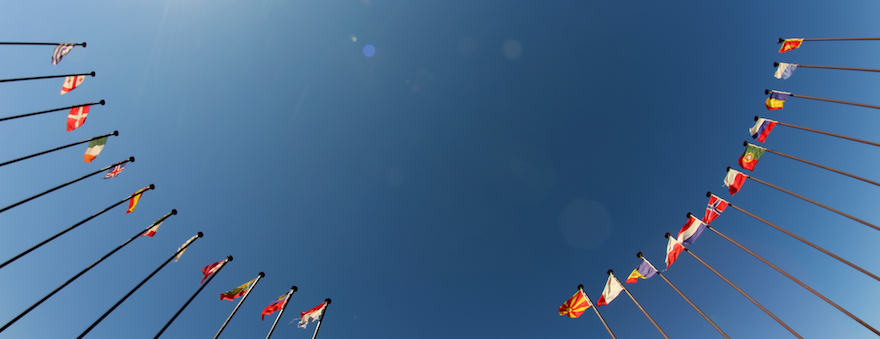Since business is often global, many people want to know what it takes to get an international trademark registration. Because of the way that trademark laws around the world work, protecting your brand in other countries can be a challenge. This article will give you the basics on protecting your brand abroad.

International trademark registration protects brands around the globe.
International Trademark Registration Basics
- There is no such thing as an international trademark registration. International trademark registrations don’t exist, per se. When you register a trademark, your benefits extend only to that country. Although there are ways to extend that protection, the default is that your trademark registration stops at the border of the country.
- Each country has its own trademark laws. Every country has its own set of trademark laws. Although there are often similarities between countries, laws differ. Every country chooses what can be registered as a trademark. You don’t need to know all the details of each country’s trademark laws, but talk to an attorney to learn about any country to which you hope to expand to.
- Think ahead about international growth. When considering international trademark registration think about which countries you want to extend your trademark to. It won’t be worth extending a trademark to every single country, and you do not want to miss any countries that are key to your business plan. Thinking ahead early will help you plan ahead to make sure that you get trademark protection where you need it.
- You can often extend your trademark protection to other countries. International trademark registration does not exist, but that does not mean that you cannot protect your trademark abroad. Thanks to a number of international treaties (chiefly the Madrid Agreement and Madrid Protocol), you can take a valid United States trademark application and extend protection to other countries. This means that you don’t have to submit an application to each country in which you want protection – you can actually file to extend your trademark protection with the United States Patent and Trademark Office, which sends your application to the World Intellectual Property Organization and then to another country’s trademark office. Not all countries have this option, though.
When To File For International Trademark Registration
File for international trademark registration quickly. Many countries base trademark rights on the first person to file, rather than the first person to use. Since the trademark registration process differs for each country, you must plan ahead.
In some cases your foreign filing date can be based on the filing date of a United States application. This provides an advantage.
Costs for International Trademark Registration
The costs for trademark filing vary from country to country. Some countries charge little, others charge a great deal. Before committing to registering your trademark in a foreign country, understand what costs you may face. Also, consider how filing in multiple classes may affect the overall cost.
Clearing International Trademark Registrations
Even if you have gotten trademark clearance in your home country, make sure that you clear it in other countries. The goal is to avoid confusion with any trademark that might already be registered there and which might put a damper on your expansion plans.
Each time you expand trademark protection to a foreign country, you will need to do a trademark search. As with any trademark, this key step helps brand owners understand whether or not other marks will pose a problem.
Monitoring And Maintaining International Trademark Registrations
As with domestic trademarks, you should monitor international trademark registrations. A variety of services exist to help this happen.
Similarly, every country has their own rules for maintaining a trademark registration. Seek counsel here.

Trackbacks/Pingbacks